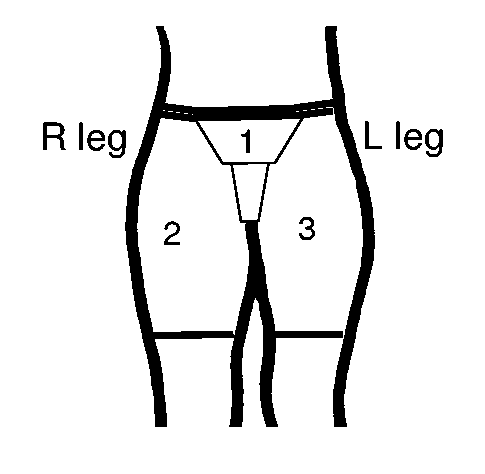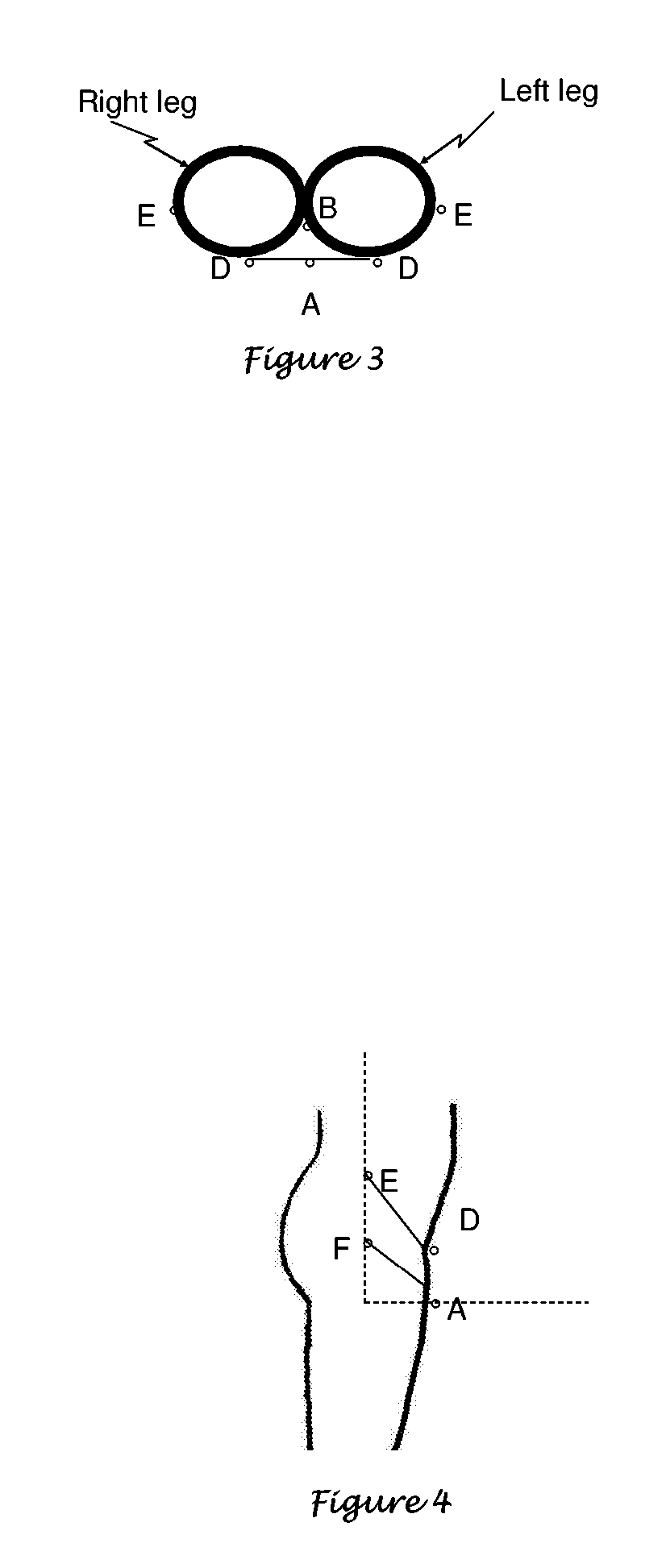Athletic Hammock
a hammock and hammock technology, applied in the field of athletic hammocks, can solve the problems of not providing much support, general discomfort, and no support for the wearer, and achieve the effects of less prone to twisting, constant size and shape of the opening, and little stretchability
- Summary
- Abstract
- Description
- Claims
- Application Information
AI Technical Summary
Benefits of technology
Problems solved by technology
Method used
Image
Examples
Embodiment Construction
[0052] In FIG. 1 point A is the forward (anterior) edge of the platform and point B is the aft (posterior) edge. Point C is the center of mass of the wearer's genitals and could fall anywhere between the range defined by vertical lines through points g and h. One can readily see that the center of mass will always fall between points A and B. Point D is the most forward point on the leg that the hammock would be extend and therefore defines the most forward position of point A. Points E and F are the anchor points for the hammock roughly on the body centerline.
[0053] In FIG. 2 one can see that points A, B, and C roughly overlap when viewed from the front. The aft edge of the hammock would be defined by the line E-B-E. The forward edge of the hammock would be defined by the line F-A-F. The line through point D defines the most forward edge of the wearer's leg.
[0054]FIG. 3 has an overhead perspective of a cross section taken at the top of the wearer's legs. Point E overlays point F ...
PUM
 Login to View More
Login to View More Abstract
Description
Claims
Application Information
 Login to View More
Login to View More - R&D
- Intellectual Property
- Life Sciences
- Materials
- Tech Scout
- Unparalleled Data Quality
- Higher Quality Content
- 60% Fewer Hallucinations
Browse by: Latest US Patents, China's latest patents, Technical Efficacy Thesaurus, Application Domain, Technology Topic, Popular Technical Reports.
© 2025 PatSnap. All rights reserved.Legal|Privacy policy|Modern Slavery Act Transparency Statement|Sitemap|About US| Contact US: help@patsnap.com



